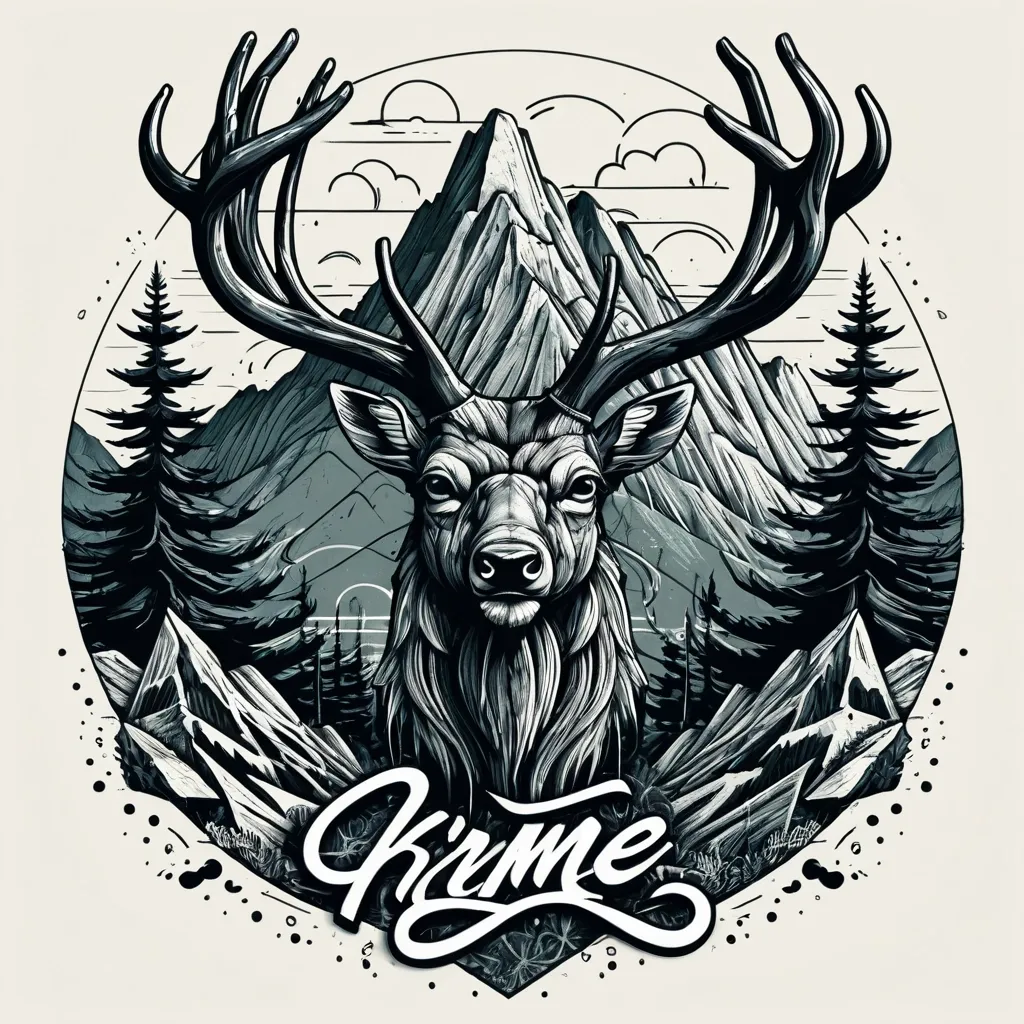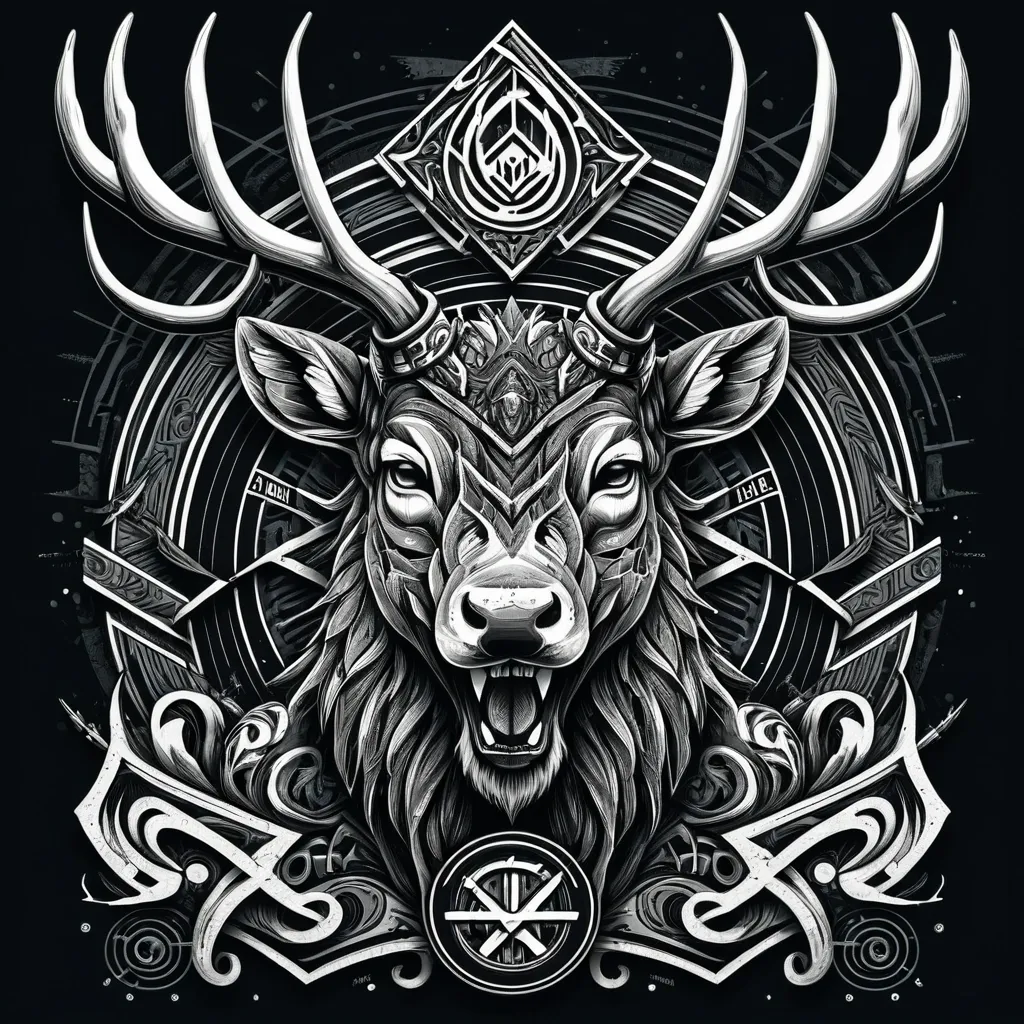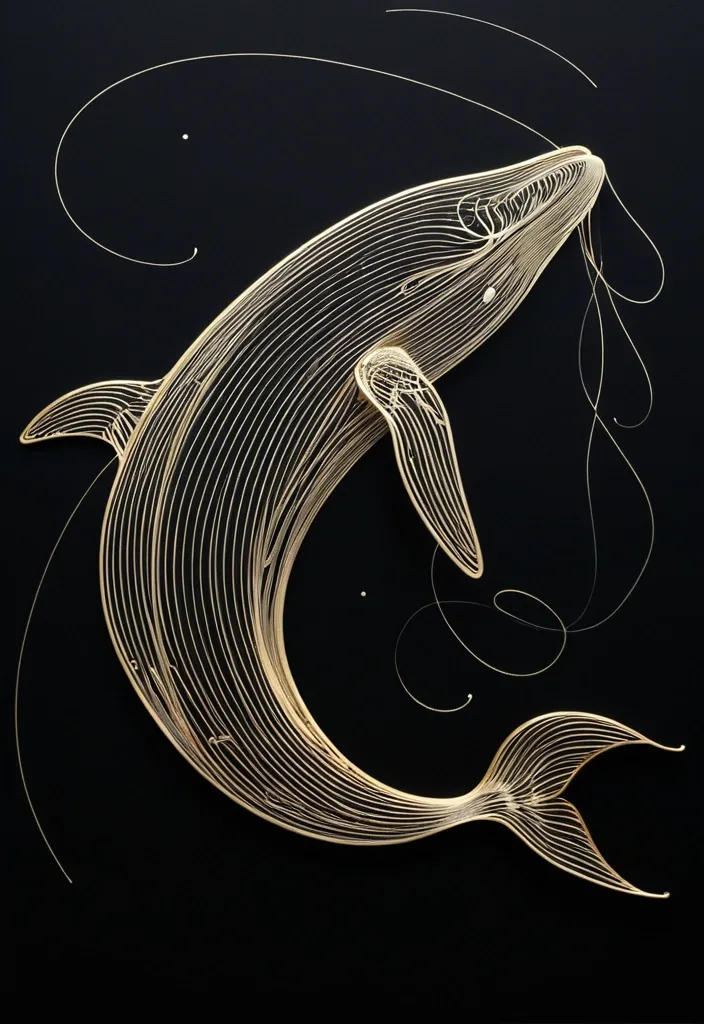Search Results for able
Explore AI generated designs, images, art and prompts by top community artists and designers.

A modern , minimalist logo for a fintech bank named "VECTOR". The design should be based on a stylized , geometric letter "V". The left side of the "V" should be a solid , stable vertical line , symbolizing a foundation. The right side should be a dynamic , upward-slanting diagonal line , creating a sense of growth and direction. Combine these elements into a single , cohesive , and elegant abstract mark. On a white background use a deep , trustworthy blue (#0F2B5B) as the primary color , with an option to add a vibrant orange gradient (#FF7A00 to #FFB800) as an accent on the diagonal line to symbolize energy. The style is clean , professional , and sleek , suitable for a digital-first financial institution. No icons of coins , globes , or animals. --style raw --v 6.0 ,

A modern , minimalist logo for a fintech bank named "VECTOR". The design should be based on a stylized , geometric letter "V". The left side of the "V" should be a solid , stable vertical line , symbolizing a foundation. The right side should be a dynamic , upward-slanting diagonal line , creating a sense of growth and direction. On a white background use a deep , trustworthy blue (#0F2B5B) as the primary color , with an option to add a vibrant orange gradient (#FF7A00 to #FFB800) as an accent on the diagonal line to symbolize energy. The style is clean , professional , and sleek , suitable for a digital-first financial institution. No icons of coins , globes , or animals. --style raw --v 6.0 ,

A modern , minimalist logo for a fintech bank named "VECTOR". The design should be based on a stylized , geometric letter "V". The left side of the "V" should be a solid , stable vertical line , symbolizing a foundation. The right side should be a dynamic , upward-slanting diagonal line , creating a sense of growth and direction. Combine these elements into a single , cohesive , and elegant abstract mark. On a white background use a deep , trustworthy blue (#0F2B5B) as the primary color , with an option to add a vibrant orange gradient (#FF7A00 to #FFB800) as an accent on the diagonal line to symbolize energy. The style is clean , professional , and sleek , suitable for a digital-first financial institution. No icons of coins , globes , or animals. --style raw --v 6.0 ,

A modern , minimalist logo for a fintech bank named "VECTOR". The design should be based on a stylized , geometric letter "V". The left side of the "V" should be a solid , stable vertical line , symbolizing a foundation. The right side should be a dynamic , upward-slanting diagonal line , creating a sense of growth and direction. Combine these elements into a single , cohesive , and elegant abstract mark. Use a deep , trustworthy blue (#0F2B5B) as the primary color , with an option to add a vibrant orange gradient (#FF7A00 to #FFB800) as an accent on the diagonal line to symbolize energy. The style is clean , professional , and sleek , suitable for a digital-first financial institution. No icons of coins , globes , or animals. --style raw --v 6.0 ,

Top-view minimalistic mockup of two blank white business cards , clean and modern layout similar to a professional business card design. Both cards are fully white with no text , no logos , no icons , no QR codes. Flat 2D look without perspective distortion. No background elements , no table texture , no plants — pure white backdrop. Soft , even lighting , high-resolution , crisp edges. ,

Top-view minimalistic mockup of two blank white business cards , clean and modern layout similar to a professional business card design. Both cards are fully white with no text , no logos , no icons , no QR codes. Flat 2D look without perspective distortion. No background elements , no table texture , no plants — pure white backdrop. Soft , even lighting , high-resolution , crisp edges. ,

Top-view minimalistic mockup of two blank white business cards , clean and modern layout similar to a professional business card design. Both cards are fully white with no text , no logos , no icons , no QR codes. Flat 2D look without perspective distortion. No background elements , no table texture , no plants — pure white backdrop. Soft , even lighting , high-resolution , crisp edges. ,

Minimalistic mockup of two white business cards lying on a light textured surface. Both cards are fully visible in the frame. One card slightly overlaps the other. Soft realistic shadows clearly show that there are two separate cards. Subtle paper texture is visible on both cards. One card has a very light embossed abstract pattern (leaf-like curves) barely noticeable , the other is blank. Neutral soft lighting , high-resolution , clean aesthetic , modern design mockup ,

A futuristic vision of a fusion of Escher and Dali styles made of Tendrils , a zero-gravity transit hub city inside a Dyson Sphere orbiting a blue giant star. This city coordinates the flow of interstellar travelers and materials. All structures are formed by dynamic gravitational fields , and transportation is enabled via quantum entanglement teleporters. Civilization laws are enforced by sentient time-dilation fields , high depth cinematic detail , (ultra-detailed) , imaginative composition , enchanting atmosphere , full illusion , captivating. ,

A detailed fantastic futuristic image of a south Indian mature woman with a beautiful appearance and glossy skin teleports in a stream of highly vibrational energy. Face/skin: glossy porcelain , mirrored highlights on cheeks , nose and forehead , soft smile. Eyes: lilac , glossy sheen in the eyes. Hair: fashionable dark brown and long hair , with shiny tips , shiny. Lips: with an ultra-moist sheen. futuristic traditional saree made of lemon matte material with an asymmetrical cut and cutouts , with glitter. Background: white , with an iridescent sheen . Lighting: professional bright , rainbow highlights. 85 mm. Textures: shiny vinyl skin with pore texture , shiny hair. ,

Santa Claus , enjoying a rare day off , is depicted attempting to master the art of underwater basket weaving amidst a school of vibrant , tropical fish in a crystal-clear lagoon. His usual red suit is replaced by a comfortable , albeit slightly ill-fitting , diving outfit. The scene is captured with a humorous , surreal twist , emphasizing his dedication to new hobbies. The style is a playful mix of digital art and vibrant realism. ,

modern graphic T-shirt art. Use the general vibe and composition style of bold linework , decorative detailing , and dynamic shapes similar to the attached mammoth design , but lighter and smoother. In the center , depict a majestic Crimean deer with expressive eyes and elegant antlers. Surround the deer with elements of Crimean nature: pine trees , rocky mountains , coastal wind lines , and organic ornamental patterns. Use 2–3 additional accent colors (soft teal , warm sand , muted forest green) while keeping the overall illustration clean and harmonious. Add gentle shading , smooth contours , and decorative strokes to maintain a stylish yet softer look. The design should feel modern , eye-catching , and suitable for a T-shirt print." ,

modern graphic T-shirt art. Use the general vibe and composition style of bold linework , decorative detailing , and dynamic shapes similar to the attached mammoth design , but lighter and smoother. In the center , depict a majestic Crimean deer with expressive eyes and elegant antlers. Surround the deer with elements of Crimean nature: pine trees , rocky mountains , coastal wind lines , and organic ornamental patterns. Use 2–3 additional accent colors (soft teal , warm sand , muted forest green) while keeping the overall illustration clean and harmonious. Add gentle shading , smooth contours , and decorative strokes to maintain a stylish yet softer look. The design should feel modern , eye-catching , and suitable for a T-shirt print." ,

"Create a highly detailed graphic illustration in the style of bold tattoo linework and vintage engraving , similar to streetwear T-shirt designs. Central character: a powerful Crimean deer with large antlers , drawn with thick dynamic contour lines , deep shadows , textured hatching and dramatic contrast. Surround the deer with elements of Crimean nature — jagged Crimean mountains , rocky cliffs , pine trees shaped by the wind , and coastal atmosphere. Add dynamic decorative strokes , broken lines , and graphic splashes like in aggressive streetwear art. Composition should be symmetrical , dense , and high-impact , suitable for DTF or screen printing. Include stylized lettering ‘Crimea’ or ‘Крым’ in a bold graffiti-inspired script. Overall vibe: strong , wild , energetic , mythic , modern streetwear aesthetic." ,

"Create a highly detailed graphic illustration in the style of bold tattoo linework and vintage engraving , similar to streetwear T-shirt designs. Central character: a powerful Crimean deer with large antlers , drawn with thick dynamic contour lines , deep shadows , textured hatching and dramatic contrast. Surround the deer with elements of Crimean nature — jagged Crimean mountains , rocky cliffs , pine trees shaped by the wind , and coastal atmosphere. Add dynamic decorative strokes , broken lines , and graphic splashes like in aggressive streetwear art. Composition should be symmetrical , dense , and high-impact , suitable for DTF or screen printing. Include stylized lettering ‘Crimea’ or ‘Крым’ in a bold graffiti-inspired script. Overall vibe: strong , wild , energetic , mythic , modern streetwear aesthetic." ,

"Create a highly detailed graphic illustration in the style of bold tattoo linework and vintage engraving , similar to streetwear T-shirt designs. Central character: a powerful Crimean deer with large antlers , drawn with thick dynamic contour lines , deep shadows , textured hatching and dramatic contrast. Surround the deer with elements of Crimean nature — jagged Crimean mountains , rocky cliffs , pine trees shaped by the wind , and coastal atmosphere. Add dynamic decorative strokes , broken lines , and graphic splashes like in aggressive streetwear art. Composition should be symmetrical , dense , and high-impact , suitable for DTF or screen printing. Include stylized lettering ‘Crimea’ or ‘Крым’ in a bold graffiti-inspired script. Overall vibe: strong , wild , energetic , mythic , modern streetwear aesthetic." ,

Create a bold , highly detailed illustration in the style of streetwear graphic art similar to tattoo-style Siberian designs. Central character: a powerful deer with large antlers , drawn in an aggressive and dynamic manner. Use thick expressive lines , dense hatching , dramatic shadows , and sharp contours. Add cracked stone textures , wooden elements , and ornamental details around the deer. Behind the deer , include energetic graphic shapes and strokes to add movement. The composition should be vertically tall , suitable for a t-shirt print. Add stylized lettering at the top and bottom (do not copy existing brands). Overall style: gritty , powerful , masculine , with strong contrast and high detail. ,

Create a bold , highly detailed illustration in the style of streetwear graphic art similar to tattoo-style Siberian designs. Central character: a powerful deer with large antlers , drawn in an aggressive and dynamic manner. Use thick expressive lines , dense hatching , dramatic shadows , and sharp contours. Add cracked stone textures , wooden elements , and ornamental details around the deer. Behind the deer , include energetic graphic shapes and strokes to add movement. The composition should be vertically tall , suitable for a t-shirt print. Add stylized lettering at the top and bottom (do not copy existing brands). Overall style: gritty , powerful , masculine , with strong contrast and high detail. ,

Create a bold , highly detailed illustration in the style of streetwear graphic art similar to tattoo-style Siberian designs. Central character: a powerful deer with large antlers , drawn in an aggressive and dynamic manner. Use thick expressive lines , dense hatching , dramatic shadows , and sharp contours. Add cracked stone textures , wooden elements , and ornamental details around the deer. Behind the deer , include energetic graphic shapes and strokes to add movement. The composition should be vertically tall , suitable for a t-shirt print. Add stylized lettering at the top and bottom (do not copy existing brands). Overall style: gritty , powerful , masculine , with strong contrast and high detail. ,

Create a bold , highly detailed illustration in the style of streetwear graphic art similar to tattoo-style Siberian designs. Central character: a powerful deer with large antlers , drawn in an aggressive and dynamic manner. Use thick expressive lines , dense hatching , dramatic shadows , and sharp contours. Add cracked stone textures , wooden elements , and ornamental details around the deer. Behind the deer , include energetic graphic shapes and strokes to add movement. The composition should be vertically tall , suitable for a t-shirt print. Add stylized lettering at the top and bottom (do not copy existing brands). Overall style: gritty , powerful , masculine , with strong contrast and high detail. ,

Create a watercolor-style illustration of a happy couple embracing in a natural setting. The man has short , dark brown hair and a light beard. He is smiling broadly , displaying an expression of joy and amusement. He is wearing a beige knitted sweater with a cable knit pattern and a plaid shirt underneath , visible through the collar. The woman has long , straight , dark brown hair. She is also smiling , gazing at the man with a tender and happy expression. She is wearing a white sweater with a cable knit pattern similar to the man's. The man is holding her legs as she hugs him from behind , her face close to his. The background features trees and soft light filtering through the leaves , creating a warm , autumnal atmosphere. The focus should be on the couple's emotions , conveying a sense of intimacy and love. The colors should be soft and warm , with diffused yellows , oranges , and greens in the background. The outlines of the figures should be soft and blurred , as if painted with watercolors. ,

minimalist dotted-line drawing of a Genie-like (a fictional character who appeared in Walt Disney Pictures' animated film Aladdin) , holding a Magic-lamp , rendered in intricate , almost filigree-like detail is created by laying gold threads one by one on a swims through a cosmic ocean. The blue threads are bent to create a shape without overlapping or intersecting , leaving a consistent gap of approximately 1mm. This work is meticulously crafted by a world-class craftsman , drawing lines with a pen. The Genie's long , ponytail is truly admirable. With his S-line figure , a world-class work of art is born , evoking exclamations. The Genie's form subtly abstracts into swirling patterns of light and color , evoking a sense of infinite , interconnected consciousness. night skyscraper building background ,

minimalist line drawing of a majestic whale , rendered in intricate , almost filigree-like detail is created by laying gold threads one by one on a swims through a cosmic ocean. The Noodle threads are bent to create a shape without overlapping or intersecting , leaving a consistent gap of approximately 1mm. This work is meticulously crafted by a world-class craftsman , drawing lines with a pen. The whale's long , wavy tails is truly admirable. With her S-line figure , a world-class work of art is born , evoking exclamations. The whale's form subtly abstracts into swirling patterns of light and color , evoking a sense of infinite , interconnected consciousness. black background. ,

A view into a dirty rubbish bin that has not been cleaned for years which contains a pair of stained and broken , stiletto heeled pink fluffy slippers surrounded by food waste that includes bones and rotting vegetables. The slippers are partly buried in the food waste , one slipper is on its side. ,

Masterpiece realism natural beautiful face , a 30-year-old beautiful pale european female long wavy brown hair in blue and white spandex space opened zipper swimsuit matching boots , is exploring an abandoned rusty space station . Computers and broken cables on walls and floor . looking toward us . Science fiction cinematic style ,

Masterpiece realism natural beautiful face , a 30-year-old beautiful pale european female long wavy brown hair in blue and white spandex space opened zipper swimsuit matching boots , is exploring an abandoned rusty space station . Computers and broken cables on walls and floor . looking toward us . Science fiction cinematic style ,

Masterpiece realism , a 40-year-old beautiful pale european female long wavy brown hair in blue and white spandex space opened zipper minidress and her teenage daughter short wavy brown hair , little freckled and combisuit same colors , are exploring an abandoned rusty space station . Computers and broken cables on walls and floor . looking toward us . Science fiction cinematic style ,

Masterpiece realism , a 40-year-old beautiful pale european female long wavy brown hair in blue and white spandex space opened zipper minidress and her teenage daughter short wavy brown hair , little freckled and combisuit same colors , are exploring an abandoned rusty space station . Computers and broken cables on walls and floor . looking toward us . Science fiction cinematic style ,

Masterpiece realism , a 40-year-old beautiful pale european female long wavy brown hair in blue and white spandex space opened zipper minidress and her teenage daughter short wavy brown hair , little freckled and combisuit same colors , are exploring an abandoned rusty space station . Computers and broken cables on walls and floor . looking toward us . Science fiction cinematic style ,
